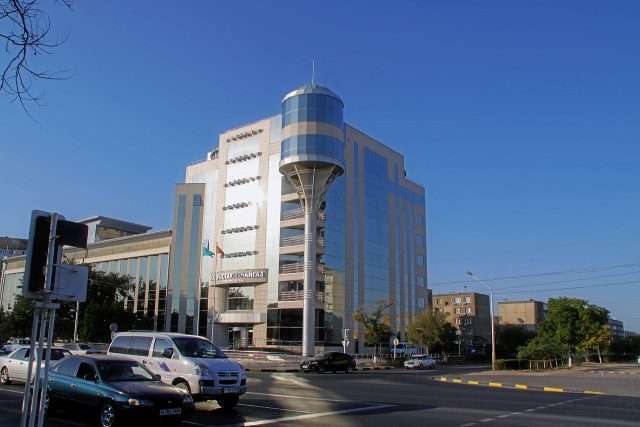
In the Central Asian republic of Kazakhstan, the protests due to the price rise of the liquid natural gas caused the Government to resign and pushed Kazakh President Tokayev to declare a two-week state of emergency.
On January 5th, 2022, the head of state of Kazakhstan, Kassym-Zhomart Tokayev, launched a document proclaiming the state of emergency in the Mangystau region and Almaty.
The content of the document informs that, due to the tenseness of the public situation, in order to preserve the safety of the population, the rule of law and order, to protect the rights and freedoms of citizens in the Mangystau region and the city of Almaty, the Government introduced the state of emergency from January 5th, 2022, from 01:30 to 00:00 minutes on January 19th, 2022.
In his address to the population through television, Kassym-Zhomart Tokayev said that he hopes for a bias towards prudence among the protesters. The President urged not to listen to external and internal provocations pushing the ‘euphoria of rallies and permissiveness’. On Tuesday, on the direct instructions of the President, a special government group began work in the region.
Recall that the riots began due to an unexpected increase in the cost of liquefied gas, which most car owners use. On January 2nd, 2022, residents of the cities of Zhanaozen and Aktau in the Mangystau region took to the streets en masse, calling for a reduction in fuel prices. According to them, from January 1st, 2022, the price for a litre of liquefied petroleum gas (LPG) increased to 120 tenge (0.27 dollars), the demonstrators demanded to reduce it to 50-60 tenge (0.11 – 0.13 dollars). The President instructed the Government to urgently consider the situation in the region, taking into account the economic feasibility and in the legal field. The government commission arrived in Aktau and got down to work. On Tuesday, after meeting with the protesters, the commission announced a reduction in the price of liquefied gas to 50 tenge per litre in the Mangystau region.
According to Energy Minister Magzum Maratuly Myrzagaliev, there are reasons to say that the owners of regional gas stations could enter into a commercial conspiracy. The Ministry of Internal Affairs of the Republic of Kazakhstan informed that the protests and riots caused more than 200 arrests and 95 injured among the Kazakh security forces.
After the collapse of the Soviet Union in 1991, Kazakhstan had a solid authoritarian regime led by Nursultan Nazarbayev, who ‘abdicated’ in favour of the current President Kassym-Jomart Tokayev. Until today, what made Kazakhastan a stable country was its economic development based on the exploitation of oil and natural gas which allowed the Kazakh society to reach an acceptable standard of living conditions (Central Asian security problems: authoritarianism, economic crisis and foreign influence, Geopolitical Report ISSN 2785-2598 Volume 8 Issue 1). The current domestic crises due to liquid natural gas prices highlight how fragile might be the Kazakh internal stability which hugely depends on the energy market and revenues.
Russia and China interests in Kazakhstan
Russia and China are constantly monitoring the domestic situation in Kazakhstan. The Russian Foreign Affairs Ministry confirmed that Moscow is closely following the development of the situation in Kazakhstan since this Central Asian republic is part of the Russian blizhnee zarubezhe (near abroad), and 25,9% of ethnic-Russians live in the country. Currently, there is no data on the victims of Russian citizens in the Central Asian republic. Furthermore, the Kremlin is concerned that the protests might lead to another ‘colour revolution’ in the post-Soviet space after those occurred in Georgia, Ukraine, and Kyrgyzstan allowing the United States to enter in local dynamics and governance in Tbilisi and Kyiv. Since Kazakhstan is a member of the Eurasian Economic Union (EAEU) and the Collective Security Treaty Organisation (CSTO) and the Central Asian republic remains one of Russia’s leading partners in foreign trade, Kremlin cannot allow an internal crisis and destabilisation in the country.
Also, China is directly involved and interested in the Kazakh domestic economy and dynamics, considering that Kazakhstan plays a fundamental role in Central Asia for Beijing’s Belt and Road Initiative (China confirms its commitment and strategy in Central Asia). China remains Kazakhstan’s second-largest trade partner, right after Russia, and a major investor and in 2020, Beijing obtained a record 811 million dollars worth of profits from past investments in the country. Moreover, in 2020, mutual trade between China and Kazakhstan grew by 4% and reached 15.4 billion dollars. Stability and socioeconomic development are essential elements that Beijing aims at achieving in Kazakhstan to support the Belt and Road Initiative and avoid any security potential threats.



